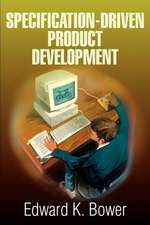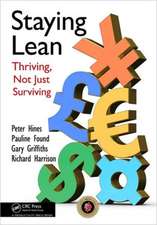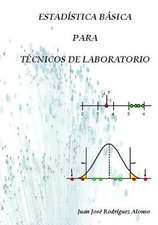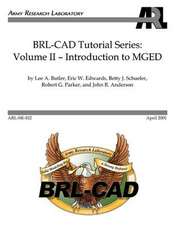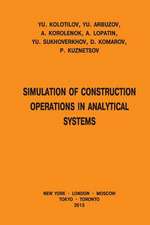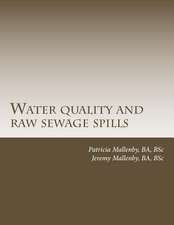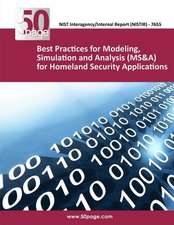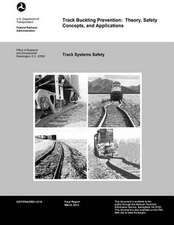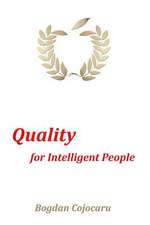Basic Experimental Strategies and Data Analysis for Science and Engineering
Autor John Lawson, John Erjavecen Limba Engleză Paperback – 30 iun 2020
Features:
- Provides a comprehensive desk reference on experimental design that will be useful to practitioners without extensive statistical knowledge
- Features a review of the necessary statistical prerequisites
- Presents a set of tables that allow readers to quickly access various experimental designs
- Includes a roadmap for where and when to use various experimental design strategies
- Shows compelling examples of each method discussed
- Illustrates how to reproduce results using several popular software packages on a supplementary website
Following the outlines and examples in this book should quickly allow a working professional or student to select the appropriate experimental design for a research problem at hand, follow the design to conduct the experiments, and analyze and interpret the resulting data.
John Lawson and John Erjavec have a combined 25 years of industrial experience and over 40 years of academic experience. They have taught this material to numerous practicing engineers and scientists as well as undergraduate and graduate students.
| Toate formatele și edițiile | Preț | Express |
|---|---|---|
| Paperback (1) | 454.26 lei 6-8 săpt. | |
| CRC Press – 30 iun 2020 | 454.26 lei 6-8 săpt. | |
| Hardback (1) | 465.92 lei 6-8 săpt. | |
| CRC Press – 15 dec 2016 | 465.92 lei 6-8 săpt. |
Preț: 454.26 lei
Nou
Puncte Express: 681
Preț estimativ în valută:
86.93€ • 90.42$ • 71.77£
86.93€ • 90.42$ • 71.77£
Carte tipărită la comandă
Livrare economică 14-28 aprilie
Preluare comenzi: 021 569.72.76
Specificații
ISBN-13: 9780367574086
ISBN-10: 036757408X
Pagini: 444
Dimensiuni: 178 x 254 x 30 mm
Greutate: 0.88 kg
Ediția:1
Editura: CRC Press
Colecția Chapman and Hall/CRC
ISBN-10: 036757408X
Pagini: 444
Dimensiuni: 178 x 254 x 30 mm
Greutate: 0.88 kg
Ediția:1
Editura: CRC Press
Colecția Chapman and Hall/CRC
Cuprins
Strategies for Experimentation. Statistical Analysis of Experimental Data. Basic Two-Level Factorial Experiments. Advanced Topics in the Design and Analysis of 2k Factorial Experiments. General Factorial Experiments and ANOVA. Regression Analysis of Experimental Data. Variance Component Studies. Screening Designs. Optimization Experiments. Response Surface Model Fitting. Sequential Experimentation. Mixture Experiments. Practical Suggestions for Successful Experimentation. Appendix.
Notă biografică
John Lawson is a professor of statistics in the Department of Statistics at Brigham Young University, Provo, Utah. John Erjavec is a retired professor and chair of the Department of Chemical Engineering, University of North Dakota, Grand Forks, North Dakota.
Recenzii
"The purpose of this book is to educate scientists and engineers on statistical strategies for developing and improving products and processes, because: 'Companies that use these strategies as standard operating procedures can expect large cost reductions in manufacturing, improved product quality, and reduced lead time for the introduction of new products and/or manufacturing methods' (Preface). The material covered in the book has been taught in a one-semester course and portions of the book have been taught in workshop settings."
~Robert Easterling, Technometrics
"This book aims to present the fundamentals of data analysis and interpretation for the sciences and engineering. Overall, the topics are very informative, and the book is dense in useful knowledge. This material is appropriate for undergraduate or graduate level students; it will be of great use to practitioners across a range of technical fields and for professionals who wish to gain a stronger understanding of experimental design and statistics. There is an emphasis on practical working knowledge, with many examples that are detailed enough to seem realistic. The book starts with basic definitions and concepts related to experimental design and does not presuppose a background in this area. Abundant supporting black-and-white figures and tables allow readers to consider the implementation of statistical concepts. A nice benefit is the exposure to a variety of graphical ways to present data—from dot plots and dot diagrams to histograms, boxplots, three-dimensional surface plots, etc. The work mentions open source programs as an alternative to commonly used proprietary software, such as Excel and Minitab. The volume is strongly recommended for all readers in the sciences and engineering fields."
~M. R. King, Vanderbilt University
~Robert Easterling, Technometrics
"This book aims to present the fundamentals of data analysis and interpretation for the sciences and engineering. Overall, the topics are very informative, and the book is dense in useful knowledge. This material is appropriate for undergraduate or graduate level students; it will be of great use to practitioners across a range of technical fields and for professionals who wish to gain a stronger understanding of experimental design and statistics. There is an emphasis on practical working knowledge, with many examples that are detailed enough to seem realistic. The book starts with basic definitions and concepts related to experimental design and does not presuppose a background in this area. Abundant supporting black-and-white figures and tables allow readers to consider the implementation of statistical concepts. A nice benefit is the exposure to a variety of graphical ways to present data—from dot plots and dot diagrams to histograms, boxplots, three-dimensional surface plots, etc. The work mentions open source programs as an alternative to commonly used proprietary software, such as Excel and Minitab. The volume is strongly recommended for all readers in the sciences and engineering fields."
~M. R. King, Vanderbilt University
Descriere
Although books covering experimental design are often written for academic courses taken by statistics majors, most experiments performed in industry and academic research are designed and analyzed by non-statisticians. Therefore, a need exists for a desk reference that will be useful to practitioners who use experimental designs in their work.

